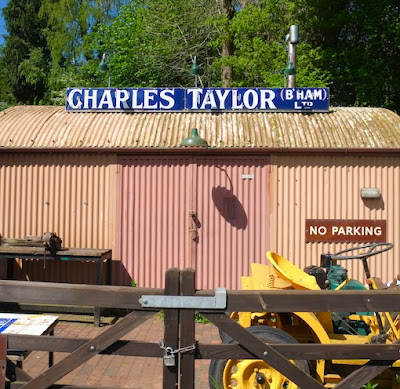Any excuse…
…for a bit of corrugated iron and an old advertising sign. Yes, they’re things I am particularly drawn to. I like corrugated iron because it’s adaptable, can take colours well, and can form the material of serviceable, attractive working buildings. I like old signs because I’m fascinated by the visual effects of their colours and letterforms, and also because they recall historical products and businesses, many of which have not made it into the 21st century. Both wrinkly iron and old signs are in abundance on preserved railways lines, notably the two closest to where I live, the Gloucestershire Warwickshire Railway and the Severn Valley Railway.
This shed is at Highley Station on the Severn Valley Railway, where it is used, I believe, as a workshop. The line was once part of the Great Western Railway network, so the shed is painted in the GWR’s usual muddy light brown. The enamel sign running along the top is a particularly large and handsome example of the sort of metal sign popular in the early decades of the last century. The deep blue background was often used on enamel signs and works well with white lettering, as here. The letters in the name are both bold and well proportioned, and well spaced too: I’d say it was a very effective sign.
It comes from the factory of Charles Taylor of Birmingham. Taylor’s made things like lathes and machine tools. Taylor’s started in 1860. The founder died in 1899 but the firm continued through the 20th century. The excellent Grace’s Guide records them as being prosecuted for keeping a dirty factory in 1874. However, a series of advertisements through the early-20th century suggests an increasing range, so that by 1937 they list lathes, chucks, cutting machines, jigs, vices, and sawing and bending machines among their products. They also introduced new innovations: they filed patents for improved chucks and pedal mechanisms in 1920 and 1954. Their factory was finally pulled down in 1999 and the sign was rescued and has ended up here, where the railway mounted it on top of this workshop building. It’s just the place for it to catch the eye of travellers and tourists on the Severn Valley Railway, an audience very likely to appreciate the bit of engineering history that it evokes.
Subscribe to:
Post Comments (Atom)




No comments:
Post a Comment